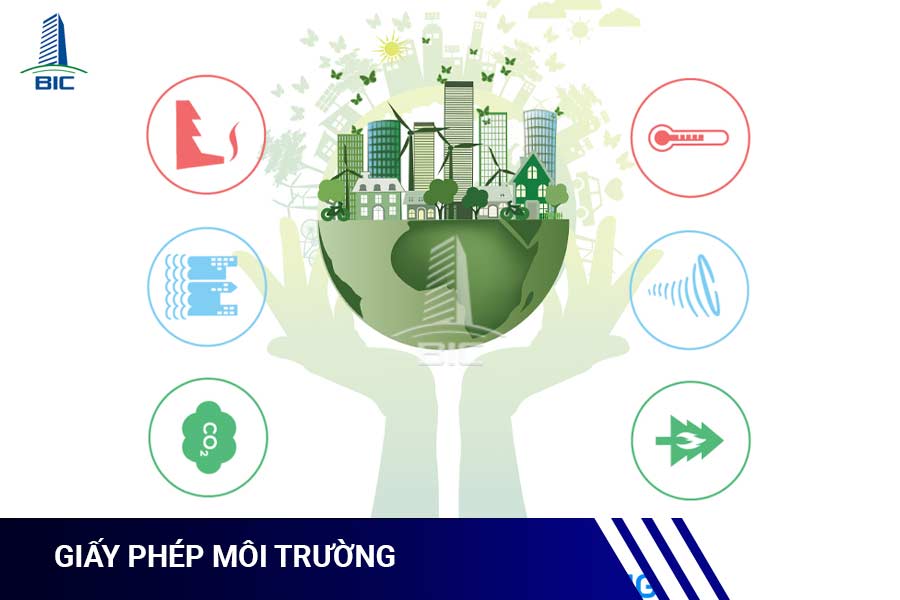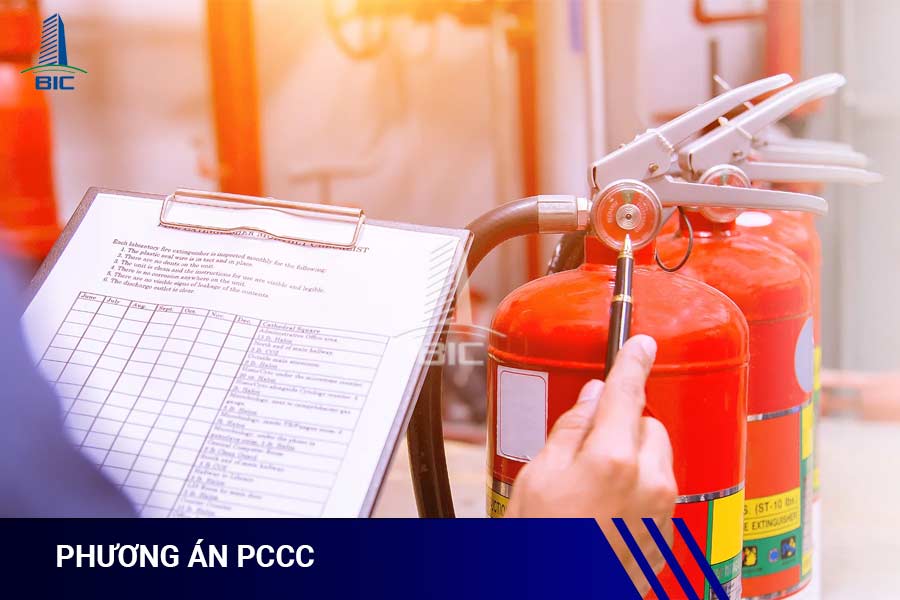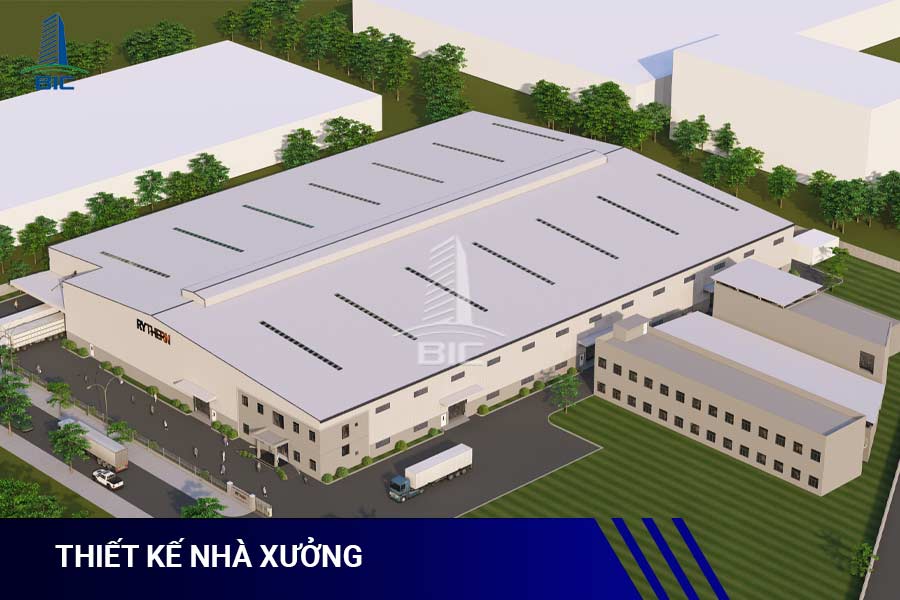
Every factory design and construction project requires the investor to thoroughly understand the legal procedures and necessary permits right from the early stages. As factories are critical production facilities, strict compliance with legal regulations is essential to ensure the project’s legality and avoid potential risks. In addition to meeting technical and planning requirements, investors must adhere to the Construction Law and related guiding documents. Doing so not only guarantees the legal validity of the project but also protects the investor’s rights, enhances credibility, and improves investment efficiency.
Proactively preparing all necessary documents in advance helps the project start on schedule and reduces the risk of delays caused by legal obstacles. In this article, BIC outlines the key legal steps from investment preparation and environmental assessment to obtaining a construction permit to help businesses clearly understand the required procedures and documentation.
For factory design construction projects involving foreign investment, investors are required to obtain an Investment Registration Certificate (IRC) in accordance with the current Law on Investment. The application dossier typically includes the investor’s application form, business registration documents, financial statements, and financial support commitments, among others, as required by law.
For projects without foreign investment, this step is not required. However, the investor must still have a valid Business Registration Certificate and be registered for construction-related activities as required by law.
Many industrial activities such as chemical processing, mechanical engineering, dyeing, food processing, and pharmaceuticals have the potential to cause environmental pollution. As a result, the Law on Environmental Protection requires the preparation of an Environmental Impact Assessment (EIA) report.
According to Decree 40/2019/NĐ-CP and Circular 25/2019/TT-BTNMT, investors must determine whether their project is subject to EIA requirements. If it is, a complete EIA dossier must be submitted to the competent authority for appraisal before proceeding with construction-related procedures.
If the project is not subject to mandatory EIA, the investor is still required to submit an Environmental Protection Commitment (or Environmental Protection Plan) when applying for a construction permit.
Some large-scale projects require additional environmental permits before operation, such as wastewater discharge permits, air emission permits, or waste treatment permits issued by the Department of Natural Resources and Environment. Although these permits are typically obtained after construction, investors should account for them during the design stage to ensure the factory meets all environmental and fire safety (FPP – Fire Prevention and Protection) standards.

The construction permit is a core legal requirement before starting any factory construction project. Under the Law on Construction 2020, all construction works including industrial factories must obtain a construction permit, except for certain cases exempted under Article 89.
A standard application dossier for a factory construction permit typically includes:
- Application form for construction permit: As per the Ministry of Construction’s template. The form must be signed by the investor (01 original copy).
- Land use documents: A notarized copy of one of the following: the Land Use Rights Certificate (LURC), the land recovery and allocation decision, or a land lease contract with a site handover record. This proves the investor’s legal right to use the land for construction.
- Investment or business registration documents: For foreign-invested or registered investment projects, a copy of the Investment Registration Certificate is required. For domestic enterprises self-funding the project, a copy of the Business Registration Certificate (BRC) must be submitted.
- Approved EIA report: If the project requires an EIA, submit a copy of the approval decision. If not, submit proof of environmental protection commitment (environmental protection plan).
- Technical construction drawings: Two sets of technical drawings or construction design drawings (site plan, sections, elevations, foundation, electrical and water supply/drainage systems, etc.) approved by the investor. These drawings must be prepared by a qualified design consultancy and clearly present the structure, architecture, and technical systems of the factory.
- Fire prevention and protection plan: For large-scale or high-risk factories, the application must include a fire safety design plan that has been appraised and approved by the Fire Prevention and Fighting Police. The approval document will be required by the permitting authority.
Other documents: These may include a feasibility study report or approved investment project (if applicable), documents approving construction safety measures (if building on land with strict safety requirements), and proof of the design contractor’s qualifications (professional practice certificates).
In short, the construction permit dossier includes investment documents (IRC or BRC), land use rights documents, environmental approvals, and detailed design drawings. Complete and accurate documentation will significantly expedite the permit review and approval process.

Once the dossier is complete, the factory construction permit process generally involves the following steps (processing time: 10–15 working days):
|
Step |
Main Content |
Responsible Authority |
|
1 |
Prepare and complete the application dossier |
Investor / Design consultant |
|
2 |
Submit the dossier at the One-Stop Administrative Center of the local commune/ward |
Commune/Ward People’s Committee |
|
3 |
Dossier review and verification |
City Department of Urban Management |
|
4 |
Issuance of construction permit |
City People’s Committee |
Step 1: The investor prepares and submits the application dossier as required.
Step 2: The commune/ward People’s Committee receives the dossier and forwards it to the relevant authority (Department of Urban Management).
Step 3: The Department of Urban Management reviews the dossier and recommends permit issuance. If additional information is required, the investor will be notified.
Step 4: After approval, the City People’s Committee (through the Department of Urban Management) issues the construction permit. The investor collects the permit at the One-Stop Administrative Center.
(Note: The process above is a general guideline. Specific details may vary by locality and project scale but generally follow the Construction Law and relevant regulations.)
Factory design must comply not only with technical standards but also with legal regulations. The design dossier submitted for permitting must include complete architectural, structural, water supply and drainage, electrical and lighting, and ventilation system drawings.
Importantly, fire prevention and environmental protection solutions must be integrated into the design. According to Decree 136/2020/NĐ-CP, factories with a volume of 3,000 m³ or more must have a fire safety design prepared and approved. The FPP dossier includes a detailed fire protection plan, proof of land use rights, and investment documents. After construction, the investor must obtain a Fire Safety Certificate issued by the Fire Prevention and Fighting Police before operation.
Regarding the environment, the factory design must include solutions for wastewater, exhaust gas, and industrial waste treatment, along with preliminary calculations. Although environmental documentation is usually finalized after basic construction is completed, planning for stormwater drainage, waste treatment, and surrounding environmental protection during the design stage will make the permitting process smoother. The more detailed and comprehensive the design, the more favorable the approval process.

- Strictly comply with legal requirements: Do not start construction without a permit. Violations can lead to severe penalties for example, constructing a large facility without a permit may result in fines of VND 120–140 million under Decree 16/2022/NĐ-CP, suspension of construction, or even forced demolition of illegal structures.
- Choose a qualified design consultant: The design contractor must hold valid professional licenses. Poorly prepared or incomplete designs, such as those lacking fire safety or environmental protection solutions will not pass appraisal and may require revision or supplementation.
- Complete and submit the dossier correctly and on time: Application forms and design templates must comply with Circular 10/2012/TT-BXD and other current regulations. Although permit issuance usually takes 10–15 working days, incomplete dossiers will delay the process. Investors should thoroughly review documents and consult the Construction Department or legal experts to minimize errors.
- Coordinate closely with authorities: Know which authority has jurisdiction (typically the provincial or city People’s Committee via the Department of Urban Management) to ensure the application is submitted correctly. Stay updated on planning regulations, new construction standards, and environmental policies to ensure the project remains compliant.
Before starting a factory design and construction project, businesses must understand all legal steps from investment registration and environmental assessment to construction and fire safety permits. Completing the required documents (IRC/BRC, EIA, LURC, technical designs, fire safety approvals, etc.) will ensure faster permitting, saving time and costs. Conversely, procedural errors can result in fines, work suspension, or even forced demolition.
With extensive experience in consulting and executing hundreds of industrial projects nationwide, BIC supports businesses throughout the entire process from design to legal documentation helping projects obtain permits quickly and ensuring construction complies with all technical and legal standards.
Contact BIC for detailed consultation on legal procedures and construction permits to ensure your facility is ready to operate lawfully, safely, and sustainably in the long term.